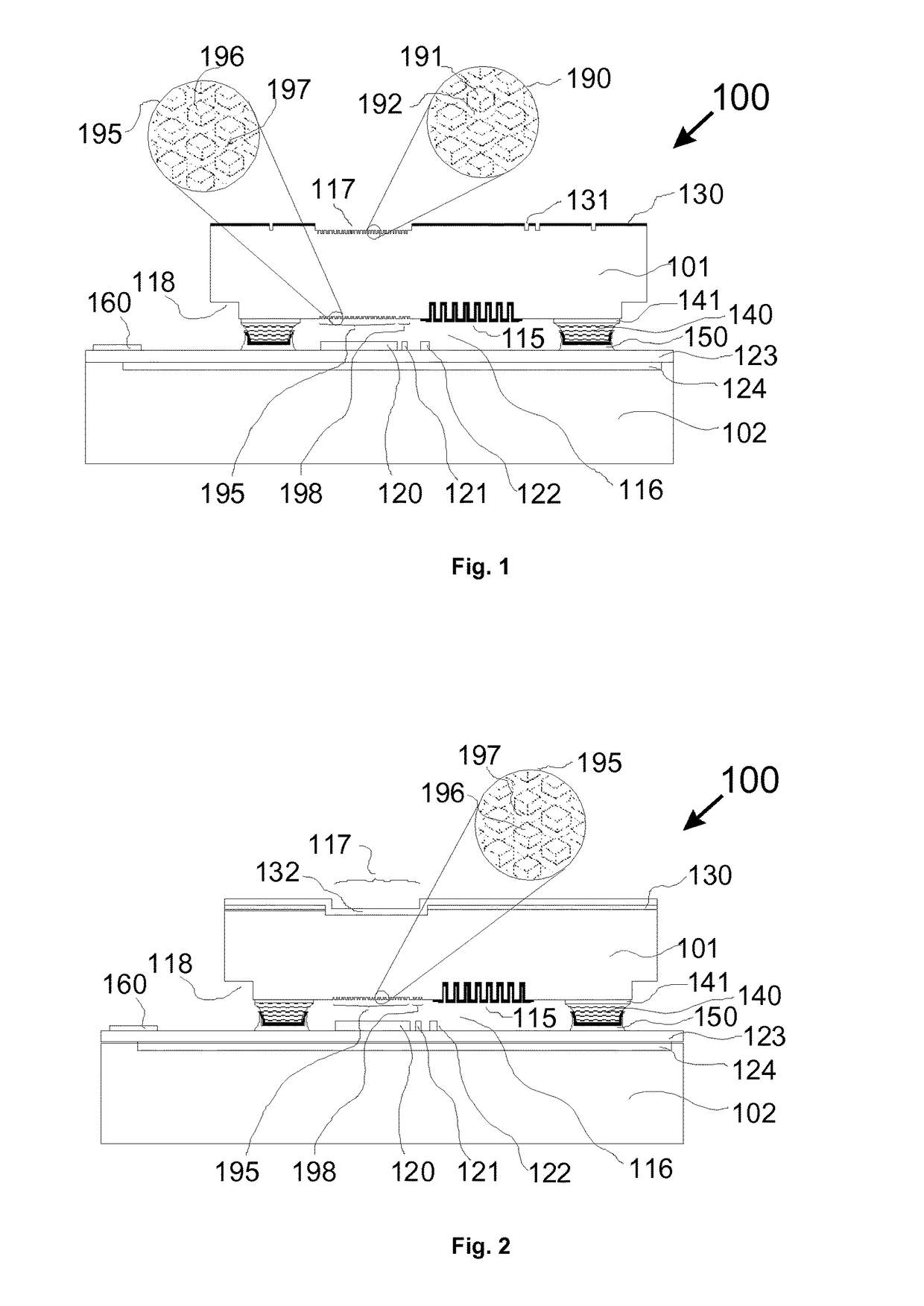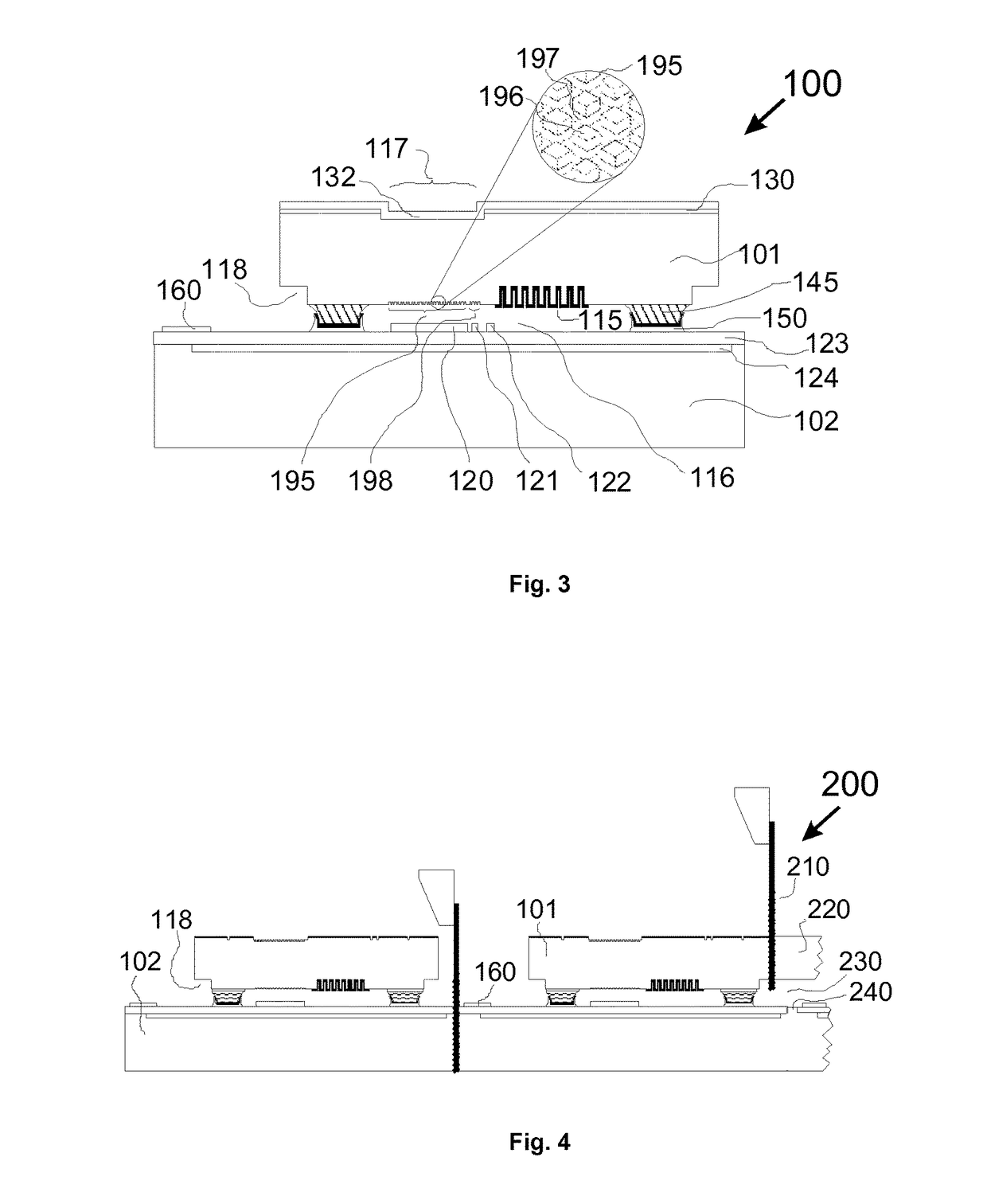Housing for an infrared radiation micro device and method for fabricating such housing
a micro-device and infrared radiation technology, applied in the field of infrared radiation micro-devices, can solve the problems of reducing the insertion loss of pre-fabricated micro-structured surface textures, negatively affecting the geometry of structure, and high insertion loss, so as to improve background detection and improve image quality. , the effect of high pass property
- Summary
- Abstract
- Description
- Claims
- Application Information
AI Technical Summary
Benefits of technology
Problems solved by technology
Method used
Image
Examples
Embodiment Construction
[0068]Reference is made to FIG. 1 showing an example of a infrared micro-bolometer array sensor 100 according to the invention. FIG. 1 shows the sensor 100 in a cross section of a representative package construction. Two round silicon wafers 101 and 102 with a diameter of 100 mm or larger and a thickness of not less than 300 μm are used; although other infrared transparent substrate materials such as germanium are suitable. A double side polished, high resistively silicon cover wafer with more than 1 Ohm·cm resistance, low crystal defect density and low oxygen content is preferred to fabricate the cover 101 to reduce the infrared absorption in the material of the cover 101.
[0069]A cavity 116 is formed by the use of a distance frame 140 arranged between cover 101 and substrate 102. The distance frame 140 encloses bolometer sensors 120, 121 and 122, which are examples for the IR-micro units, and a getter layer 115.
[0070]The distance frame 140 is made of silicon and has rounded side wa...
PUM
 Login to View More
Login to View More Abstract
Description
Claims
Application Information
 Login to View More
Login to View More - R&D
- Intellectual Property
- Life Sciences
- Materials
- Tech Scout
- Unparalleled Data Quality
- Higher Quality Content
- 60% Fewer Hallucinations
Browse by: Latest US Patents, China's latest patents, Technical Efficacy Thesaurus, Application Domain, Technology Topic, Popular Technical Reports.
© 2025 PatSnap. All rights reserved.Legal|Privacy policy|Modern Slavery Act Transparency Statement|Sitemap|About US| Contact US: help@patsnap.com



